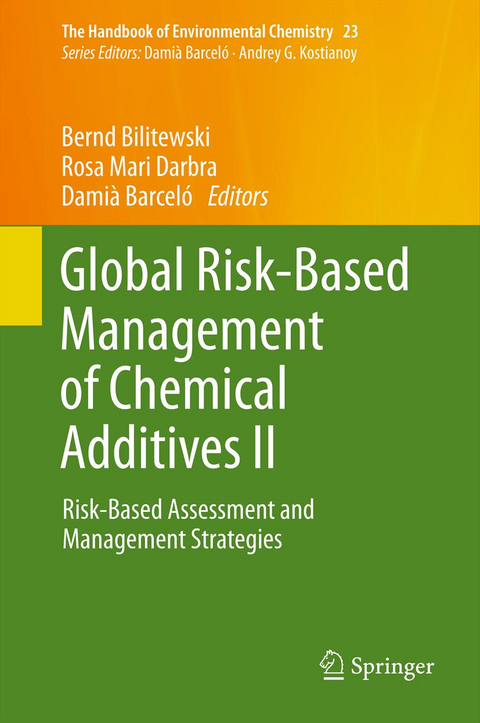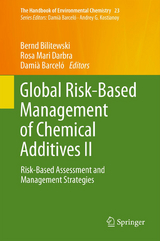Global Risk-Based Management of Chemical Additives II
Springer Berlin (Verlag)
978-3-642-34571-5 (ISBN)
Chemical additives are used to enhance the properties of many industrial products. Since their release into the environment is a potential risk for man and nature, their fate and behavior have been investigated in the framework of the European Union-funded project RISKCYCLE. The results are presented in two volumes, Global Risk-Based Management of Chemical Additives I: Production, Usage and Environmental Occurrence and Global Risk-Based Management of Chemical Additives II: Risk-Based Assessment and Management Strategies. This book is the second of the two volumes and features two main parts. In the first part, experts in the field discuss different models related to the assessment of the potential risks posed by chemical additives and analyze their benefits and drawbacks. In the second part, specific case studies in which the models have been applied are presented and the reliability of the models is evaluated.
This volume is an invaluable source of information for scientists and governmental agencies dealing with the risk assessment of chemicals on a global scale.
Introduction.- Life cycle assessment of additives: methodology and data.- Characterization of environmental exposure: measuring versus modelling.- Environmental fate models.- Toxicological and eco-toxicological studies for additives.- A revision of current models for environmental and human health impact and risk assessment for application to emerging chemicals.- Are chemicals in products good or bad for the society? - The economic perspective.- RISKCYCLE and EU legislation.- Two sides of one coin: relations between hazardous substances and valuable resources.- Toxicological characterization of waste-related products using alternative methods: three case studies.- LCA case study on printed matter.- LCA case study Cushion Vinyl Floor Covering and DEHP: Environmental impacts of use and recycling of additives (DEHP) in products.- Chemicals in leather - international trends on risk based control and management.- Managing e-waste in eeveloped and developing countries.- Mass emissions of pollutants from e-waste processed in China and human exposure assessment.- Tracking global flows of e-waste additives by using substance flow analysis (SFA), with a case study in China.- Human and environmental impact producted by e-waste releases at Guiyu region (China).- In search of zero waste: an experiment in progress.- Mineral oil in board and paper recycling.- Proposed plan for disposal of mercury bearing lamps for India.- Study of the substitution of fossil fuels by RDF produced from municipal solid waste of Hanoi - a case study.- Conclusions.
| Erscheint lt. Verlag | 25.2.2013 |
|---|---|
| Reihe/Serie | The Handbook of Environmental Chemistry |
| Zusatzinfo | XVII, 478 p. 104 illus., 50 illus. in color. |
| Verlagsort | Berlin |
| Sprache | englisch |
| Maße | 155 x 235 mm |
| Gewicht | 871 g |
| Themenwelt | Sachbuch/Ratgeber ► Natur / Technik ► Natur / Ökologie |
| Naturwissenschaften ► Biologie ► Ökologie / Naturschutz | |
| Naturwissenschaften ► Chemie ► Technische Chemie | |
| Weitere Fachgebiete ► Land- / Forstwirtschaft / Fischerei | |
| Schlagworte | Environment • Human health • Legislation • Recycling • risk assessment • Waste exports |
| ISBN-10 | 3-642-34571-9 / 3642345719 |
| ISBN-13 | 978-3-642-34571-5 / 9783642345715 |
| Zustand | Neuware |
| Haben Sie eine Frage zum Produkt? |
aus dem Bereich




